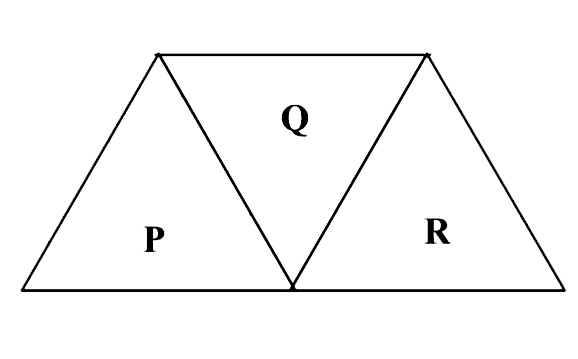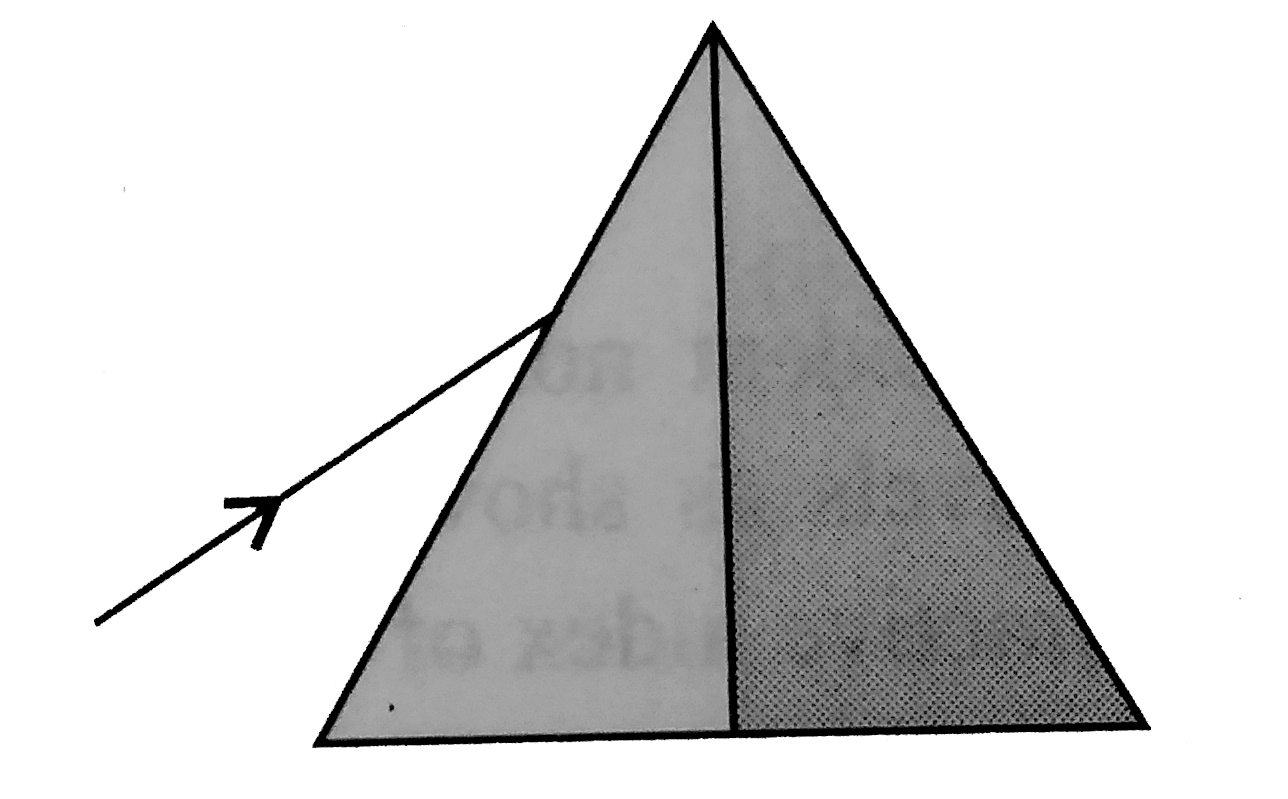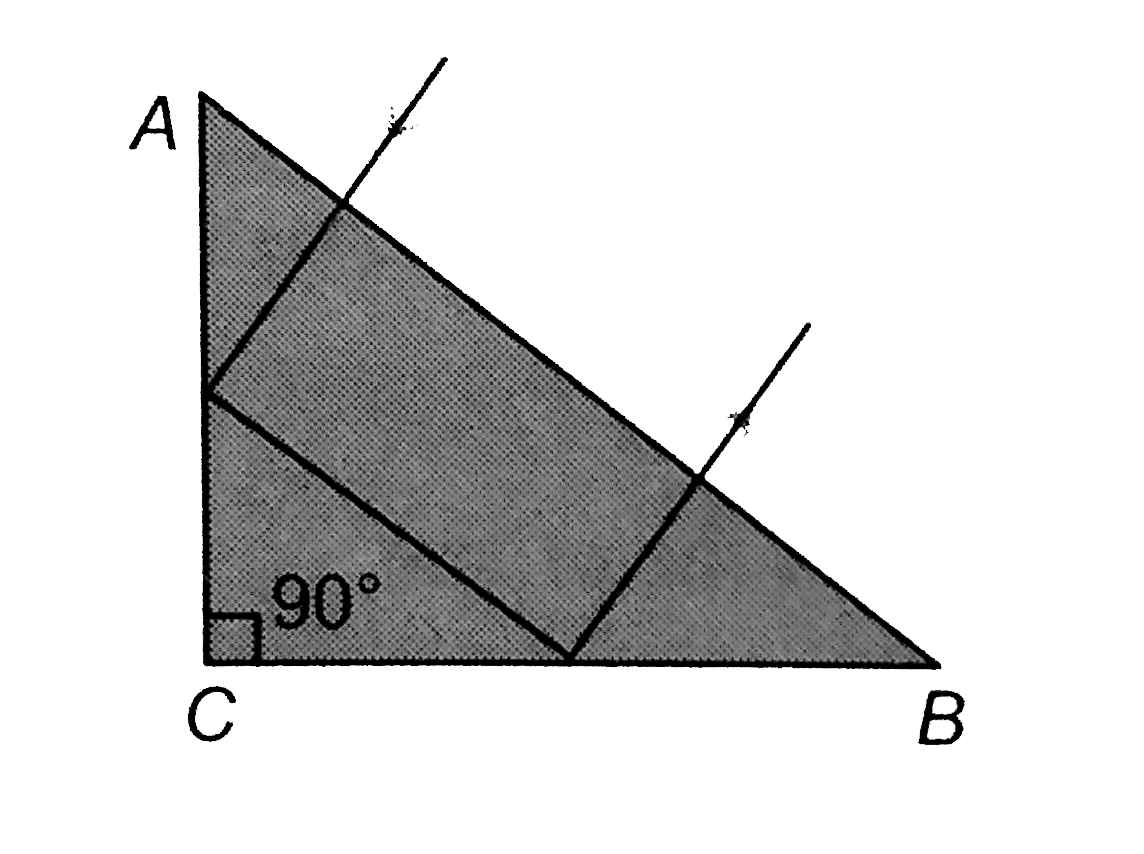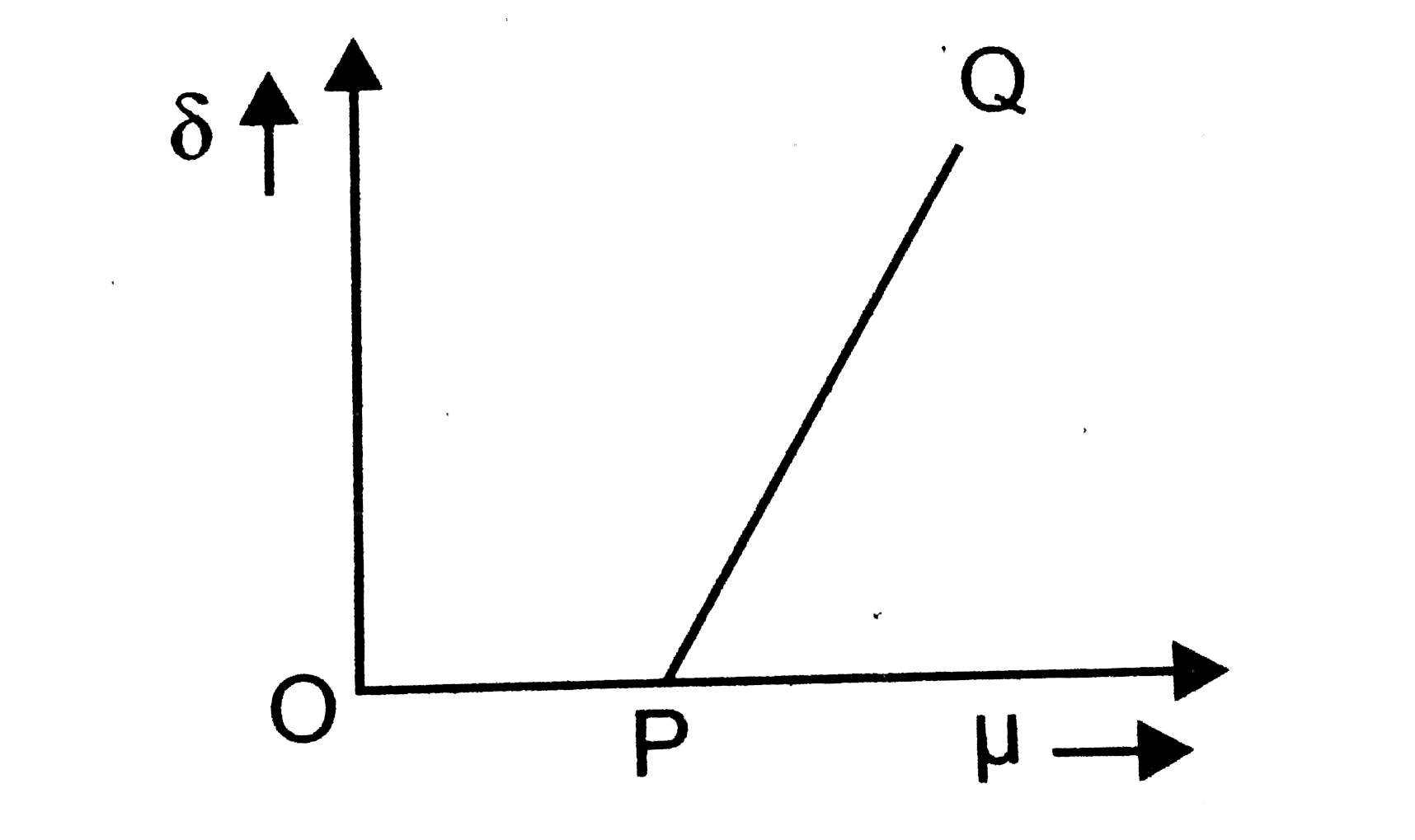Complete Solutions to Prism Theory And Dispersion Of Light of chapter GEOMETRICAL OPTICS of Class 12 book with complete answers and questions
| Class 12 | PHYSICS |
| Chapter | GEOMETRICAL OPTICS |
| A2Z | Prism Theory And Dispersion Of Light |
| Number Of Questions | 45 |
| Academic Year | 2023-24 |
The critical angle between and equilateral prism and air is `45^(@)`. If the incident ray is perpendicular to the refracting surface, then
03:28View SolutionThe refracting angle of a glass prism is `30^@.` A ray is incident onto one of the faces perpendicular to it. Find the angle `delta` between the incident ray and the ray that leaves the prism. The refractive index of glass is `mu=1.5.`
03:51View SolutionWhen light rays are incident on a prism at an angle of `45^(@)`, the minimum deviation is obtained. If refractive index of the material of prism is `sqrt(2)`, then the angle of prism will be
03:20View SolutionA light ray is incident by grazing one of the face of a prism and after refraction ray does not emerge out, what should be the angle of prism while critical angle is `C` ?
04:15View SolutionA parallel beam of monochromatic light is incident at one surface of a equilateral prism. Angle of incidence is `55^(@)` and angle of emergence is `46^(@)`. The angle of minimum deviation will be
02:50View SolutionThree prisms of crown glass, each have angle of prism `9^(@)` and two prisms of flint glass are used to make direct vision spectroscope. What will be the angle of flint glass prisms if `mu` for flint is `1.69` and `mu` for crown glass is `1.53` ?
04:34View SolutionIf the refractive indices of crown glass for red, yellow and violet colours are `1.5140, 1.5170` and `1.5318` respectively and for flint glass these are `1.6434, 1.6499` and `1.6852` respectively, then the dispersive powers for crown and flint glass are respectively.
02:50View SolutionFlint glass prism is joined by a crown glass prism to produce dispersion without deviation. The refractive indices of these for mean rays are `1.602` and `1.500` respectively. Angle of prism of flint prism is `10^(@)`, then the angle of prism for crown prism will be
04:07View SolutionA beam of white light passing through a hollow prism give no spectrum.
02:20View SolutionThe light ray is incidence at angle of `60^(@)` on a prism of angle `45^(@)` . When the light ray falls on the other surface at `90^(@)` , the refractive index of the material of prism` mu` and the angle of devation `delta` are given by
03:38View SolutionThe angle of minimum deviation measured with a prism is `30^(@)` and the angle of prism is `60^(@)`. The refractive index of prism material is
02:59View SolutionIf the refractive indices of a prism for red, yellow and violet colours be `1.61, 1.63` and `1.65` respectively, then the dispersive power of the prism will be
02:51View SolutionThe minimum deviation produced by a hollow prism filled with a certain liquid is found to be `30^(@)`. The light ray is also found to be refracted at angle of `30^(@)`. The refractive index of the liquid is
03:43View SolutionA thin prism `P_(1)` with angle `4degree` and made from glass of refractive index 1.54 is combined with another thin prism `P_(2)` made from glass of refractive index 1.72 to produce dispersion without deviation. The angle of the prism `P_(2)` is
01:39View SolutionA given ray of light suffers minimum deviation in an equilateral prism P. Additional prism Q and R of identical shape and of the same material as P are now added as shown in the figure. The ray will now suffer
 02:21View Solution
02:21View SolutionAngle of a prism is `30^(@)` and its refractive index is `sqrt(2)` and one of the surface is silvered. At what angle of incidence, a ray should be incident on one surface so that after reflection from the silvered surface, it retraces its path ?
04:08View SolutionA ray of light is incident at an angle of `60^@` on the face of a prism having refracting angle `30^@.` The ray emerging out of the prism makes an angle `30^@` with the incident ray. Show that the emergent ray is perpendicular to the face through which it emerges.
01:21View SolutionA ray of light passes through an equilateral glass prism in such a manner that the angle of incidence is equal to the angle of emergence and each of these angles is equal to `3//4` of the angle of the prism. The angle of deviation is
03:37View SolutionOne face of a prism with a refrective angle of `30^@` is coated with silver. A ray of light incident on another face at an angle of `45^@` is refracted and reflected from the silver coated face and retraces its path. What is the refractive index of the prism?
02:08View SolutionA light ray is incident upon a prism in minimum deviation position and suffers a deviation of `34^(@)`. If the shaded half of the prism is knowked off, the ray will
 04:13View Solution
04:13View SolutionA ray of monochromatic light is incident on one refracting face of a prism of angle `75^(@)`. It passes through the prism and is incident on the other face at the critical angle. If the refractive index of the material of the prism is `sqrt(2)`, the angle of incidence on the first face of the prism is
03:44View SolutionThree glass prism `A,B` and `C` of same refractive index are placed in contact with each other as shown in figure, with no air gap between the prisms. Monochromatic ray of light `OP` passes through the prism assembly and emerges as `QR`. The conditions of minimum deviation is satisfied in the prisms.
 03:00View Solution
03:00View SolutionThe refractive index of a material of a prism of angles `45^(@)-45^(@)-90^(@)` is `1.5.` The path of the ray of light incident normally on the hypotenuse side is shown in
03:36View SolutionAngle of prism is `A` and its one surface is silvered. Light rays falling at an angle of incidence `2 A` on first surface return back through the same path after suffering reflection at second silvered surface. Refraction index of the material of prism is
04:20View SolutionA ray of light incident normally on an isosceles right angled prism travels as shown in the figure. The least value of the refractive index of the prism must be
 03:54View Solution
03:54View SolutionWhen light of wavelength `lambda` on an equilateral prism, kept on its minimum deviation position, it is found that the angle of deviation equals the angle the angle of the prism itself. The refractive index of the material of the prism for the wavelength `lambda` is
01:16View SolutionWhich of the following diagrams shows correctly the dispersion of white light by a prism ?
02:05View SolutionA light ray is incident perpendicularly to one face of a `90^circ` prism and is totally internally reflected at the glass-air interface. If the angle of reflection is `45^circ`, we conclude that the refractive index n
 01:10View Solution
01:10View SolutionTwo lenses having `f_(1):f_(2)=2:3` has combination to make no dispersion. Find the ratio of dispersive power of glasses used
02:42View SolutionIf refractive index of red, violet and yellow light are `1.42, 1.62` and `1.50` respectively for a medium. Its dispersive power will be
02:13View SolutionA ray of light is incident at small angle I on the surface of prism of small angle A and emerges normally from the oppsite surface. If the refractive index of the material of the prism is mu, the angle of incidence is nearly equal to
01:42View SolutionThe angle of a prism is `60^(@)` and its refractive index is `sqrt(2)`. The angle of minimum deviation suffered by a ray of light in passing through it is
03:44View SolutionThe dispersive powers of crown and flint glasses are `0.02` and `0.04` respectively. In an achromatic combination of lenses the focal length of flint glass lens is `40 cm`. The focal length of crown glass lens will be
02:35View SolutionWhen a ray of light is incident normally on one refracting surface of an equilateral prism (Refractive index of the material of the prism `=1.5`
03:23View SolutionUnder minimum deviation condition in a prism, if a ray is incident at an angle `30^(@)`, the angle between the emergent ray and the second refracting surface of the prism is
01:57View SolutionA ray of light is incident normally on one of the faces of a prism of apex angle 30 degree and refractive index `sqrt2`. The angle of deviation of the ray is…degrees.
03:10View SolutionFor a prism of refractive index `1.732`, the angle of minimum deviation is equal to the angle of the prism. The angle of the prism is
04:03View SolutionWhen a glass prism of refracting angle `60^(@)` is immersed in a liquid its angle of minimum deviation is `30^(@)`. The critical angle of glass with respect to the liquid medium is
04:26View SolutionA prism of refractive index p and angle A is placed in the minimum deviation position. If the angffe of minimum deviation is A, then the value of A in terms of p is
02:09View SolutionA prism of refractive index sqrt2 has refractive angle `60^@.` In the order that a ray suffers minimum deviation it should be incident at an angle of
01:56View SolutionA parallel beam of white light falls on a convex lens. Images of blue, yellow and red light are formed on other side of the lens at a distance of `0.20m, 0.205m` and `0.214m` respectively. The dispersive power of the material of the lens will be
03:02View SolutionA beam of light composed of red and green ray is incident obliquely at a point on the face of rectangular glass slab. When coming out on the opposite parallel face, the red and green ray emerge form
03:42View SolutionA ray of monochromatic light suffers minimum deviation of `38^(@)` while passing through a prism of refracting angle `60^(@)` . Refracting index of the prism material is
02:45View SolutionFor a small angled prism, angle of prism `A` of minimum deviation`(delta)` varies with the refractive index of the prism as shown in the graph
 02:10View Solution
02:10View SolutionThe graph between angle of deviation `(delta)` and angle of incidence (i) for a triangular prism is represented by
03:20View Solution
Prism Theory And Dispersion Of Light questions and complete solutions for chapter GEOMETRICAL OPTICS of A2Z PHYSICS (HINGLISH) of Class 12
